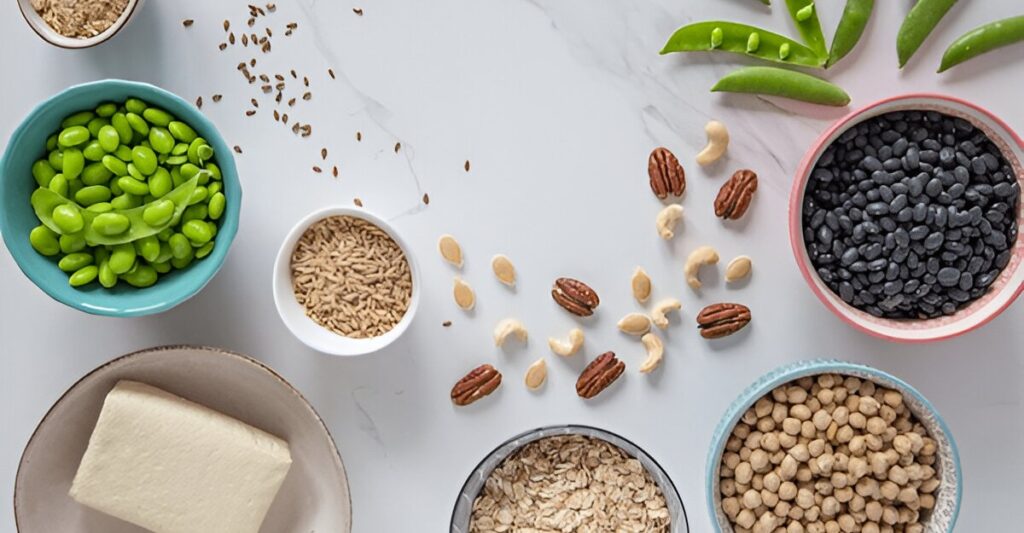When it comes to nutrition, macronutrients like carbs, protein, and fat often steal the spotlight. But micronutrients explained reveals the unsung heroes of health: vitamins and minerals. These tiny nutrients play a massive role in keeping your body functioning at its best. This beginner-friendly guide dives into what micronutrients are, why they matter, and how to ensure you’re getting enough.
What Are Micronutrients?
Micronutrients are vitamins and minerals your body needs in small amounts to support critical functions like immunity, energy production, and cell repair. Unlike macronutrients, which provide energy, micronutrients act as helpers, enabling your body to perform at its peak. Understanding micronutrients explained empowers you to make food choices that boost your health.
There are two main categories of micronutrients: vitamins and minerals. Each has unique roles, and deficiencies can lead to health issues. Let’s break them down.
Vitamins: The Organic Powerhouses
Vitamins are organic compounds that support a range of bodily processes. They’re classified as either fat-soluble (stored in the body) or water-soluble (not stored, so regular intake is key). Here’s a closer look at micronutrients explained through vitamins:
Fat-Soluble Vitamins
- Vitamin A: Supports vision, skin health, and immunity. Found in carrots, sweet potatoes, and spinach.
- Vitamin D: Promotes bone health by aiding calcium absorption. Get it from sunlight, fatty fish, or fortified dairy.
- Vitamin E: Protects cells from damage as an antioxidant. Nuts, seeds, and leafy greens are great sources.
- Vitamin K: Essential for blood clotting and bone health. Find it in kale, broccoli, and Brussels sprouts.
Water-Soluble Vitamins
- Vitamin C: Boosts immunity and collagen production. Citrus fruits, bell peppers, and strawberries are rich sources.
- B Vitamins: This group (B1, B2, B3, B5, B6, B7, B9, B12) supports energy metabolism, brain function, and red blood cell production. Sources include whole grains, eggs, meat, and legumes.
Why They Matter: Vitamins are crucial for everything from fighting infections to maintaining healthy skin. Deficiencies can cause fatigue, weak immunity, or even serious conditions like scurvy (vitamin C deficiency).
Minerals: The Inorganic Essentials
Minerals are inorganic substances that support structural and functional processes. They’re divided into major minerals (needed in larger amounts) and trace minerals (needed in smaller amounts). Here’s micronutrients explained for minerals:
Major Minerals
- Calcium: Builds strong bones and teeth; supports muscle and nerve function. Found in dairy, leafy greens, and fortified plant milks.
- Magnesium: Regulates muscle relaxation, energy production, and heart health. Nuts, seeds, and whole grains are top sources.
- Potassium: Maintains fluid balance and supports heart and muscle function. Bananas, avocados, and potatoes are potassium-rich.
Trace Minerals
- Iron: Carries oxygen in the blood. Found in red meat, lentils, and spinach. Pair with vitamin C for better absorption.
- Zinc: Supports immunity and wound healing. Oysters, pumpkin seeds, and beans are great choices.
- Selenium: Acts as an antioxidant and supports thyroid health. Brazil nuts, fish, and eggs provide selenium.
Why They Matter: Minerals keep your bones strong, your heart beating, and your cells functioning. Deficiencies, like low iron, can lead to anemia or fatigue.
Why Micronutrients Matter
Understanding micronutrients explained highlights their importance for long-term health. Here’s why they’re essential:
- Disease Prevention: Vitamins C and E, along with zinc and selenium, strengthen immunity to fight off infections.
- Energy and Mood: B vitamins and magnesium boost energy production and support mental clarity.
- Bone Health: Calcium, vitamin D, and vitamin K work together to maintain strong bones and prevent osteoporosis.
- Growth and Repair: Micronutrients like vitamin A and zinc aid tissue repair and healthy development.
A diet lacking micronutrients can lead to deficiencies, causing symptoms like fatigue, weak bones, or poor immunity. By prioritizing micronutrients explained, you can prevent these issues and feel your best.
How to Get Enough Micronutrients
The best way to meet your micronutrient needs is through a varied, whole-foods diet. Here are practical tips for applying micronutrients explained to your meals:
- Eat the Rainbow: Colorful fruits and vegetables (red peppers, blueberries, spinach) provide a range of vitamins and antioxidants.
- Include Whole Foods: Choose whole grains, lean proteins, nuts, seeds, and legumes to cover both vitamins and minerals.
- Don’t Skip Dairy or Alternatives: Dairy or fortified plant-based milks provide calcium and vitamin D.
- Limit Processed Foods: Junk food lacks micronutrients and can displace nutrient-rich options.
- Consider Cooking Methods: Steam or lightly cook vegetables to preserve water-soluble vitamins like vitamin C.
Sample Micronutrient-Rich Meal: Grilled salmon (vitamin D, selenium), quinoa (magnesium), and a spinach salad with tomatoes and olive oil (vitamins A, C, E, and K).
Should You Take Supplements?
While food is the best source of micronutrients, supplements can help in certain cases, like vitamin D in winter or iron for vegetarians. However, micronutrients explained emphasizes that supplements can’t replace a balanced diet. Overdoing supplements can also cause harm, like excessive vitamin A leading to toxicity. Consult a healthcare provider before starting any supplements.
Common Micronutrient Deficiencies
Even in developed countries, deficiencies are common. Here are a few to watch for in micronutrients explained:
- Vitamin D: Common in areas with limited sunlight. Boost intake with fortified foods or supplements.
- Iron: Affects many women due to menstruation. Pair plant-based iron sources with vitamin C for better absorption.
- Vitamin B12: Common in vegans, as it’s primarily found in animal products. Fortified foods or supplements can help.
Regular blood tests and a varied diet can help you stay on top of your micronutrient levels.
Myths About Micronutrients Debunked
As you explore micronutrients explained, you’ll encounter myths. Let’s clear them up:
- Myth: More Vitamins Are Always Better: Excess vitamins, especially fat-soluble ones, can be toxic. Stick to recommended amounts.
- Myth: Supplements Are Enough: Whole foods provide fiber and other nutrients that supplements lack.
- Myth: All Processed Foods Lack Nutrients: Some fortified foods, like cereals, can provide micronutrients, but whole foods are still better.
Tips for Beginners to Boost Micronutrient Intake
New to micronutrients explained? Start with these simple steps:
- Add One Nutrient-Dense Food Daily: Try a handful of blueberries or a serving of broccoli.
- Mix Up Your Plate: Include at least three food groups per meal to diversify your micronutrient intake.
- Snack Smart: Choose nuts or yogurt over chips for a micronutrient boost.
- Read Labels: Look for fortified foods if you’re at risk of deficiencies, like vitamin B12 for vegans.
- Stay Curious: Experiment with new fruits, vegetables, or grains to keep your diet exciting.
The Long-Term Benefits of Micronutrients
Prioritizing micronutrients explained is an investment in your future. A micronutrient-rich diet can:
- Enhance immunity, reducing sick days.
- Support healthy aging by protecting bones and skin.
- Improve energy and focus for work and play.
- Lower the risk of chronic diseases like heart disease and osteoporosis.
By making small, sustainable changes, you’ll reap the rewards of vibrant health.
Conclusion
Micronutrients—vitamins and minerals—may be small, but their impact is huge. By understanding micronutrients explained, you can build a diet that fuels your body and prevents deficiencies. Start with colorful, whole foods, stay mindful of your needs, and enjoy the journey to better health.
Ready to take the next step? Try a new micronutrient-rich recipe, track your intake for a week, or consult a dietitian to personalize your plan.



